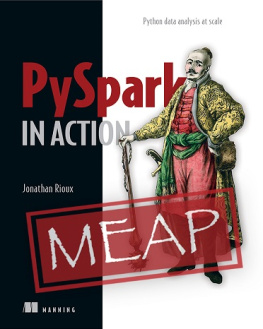Jr A J Henley - Learn data analysis with Python: lessons in coding
Here you can read online Jr A J Henley - Learn data analysis with Python: lessons in coding full text of the book (entire story) in english for free. Download pdf and epub, get meaning, cover and reviews about this ebook. City: Berkeley;California, year: 2018, publisher: Apress, Berkeley, CA, genre: Home and family. Description of the work, (preface) as well as reviews are available. Best literature library LitArk.com created for fans of good reading and offers a wide selection of genres:
Romance novel
Science fiction
Adventure
Detective
Science
History
Home and family
Prose
Art
Politics
Computer
Non-fiction
Religion
Business
Children
Humor
Choose a favorite category and find really read worthwhile books. Enjoy immersion in the world of imagination, feel the emotions of the characters or learn something new for yourself, make an fascinating discovery.
- Book:Learn data analysis with Python: lessons in coding
- Author:
- Publisher:Apress, Berkeley, CA
- Genre:
- Year:2018
- City:Berkeley;California
- Rating:4 / 5
- Favourites:Add to favourites
- Your mark:
Learn data analysis with Python: lessons in coding: summary, description and annotation
We offer to read an annotation, description, summary or preface (depends on what the author of the book "Learn data analysis with Python: lessons in coding" wrote himself). If you haven't found the necessary information about the book — write in the comments, we will try to find it.
Each lesson is, as much as possible, self-contained to allow you to dip in and out of the examples as your needs dictate. If you are already using Python for data analysis, you will find a number of things that you wish you knew how to do in Python. You can then take these techniques and apply them directly to your own projects.
If you arent using Python for data analysis, this book takes you through the basics at the beginning to give you a solid foundation in the topic. As you work your way through the book you will have a better of idea of how to use Python for data analysis when you are finished.
What You Will Learn
Get data into and out of Python code
Prepare the data and its format
Find the meaning of the data
Visualize the data using iPython
Who This Book Is For
Those who want to learn data analysis using Python. Some experience with Python is recommended but not required, as is some prior experience with data analysis or data science.
Jr A J Henley: author's other books
Who wrote Learn data analysis with Python: lessons in coding? Find out the surname, the name of the author of the book and a list of all author's works by series.












